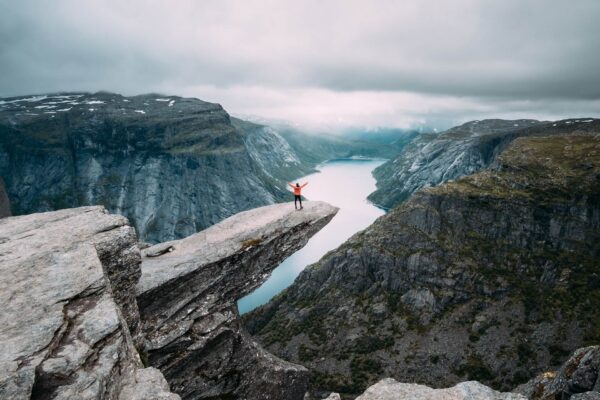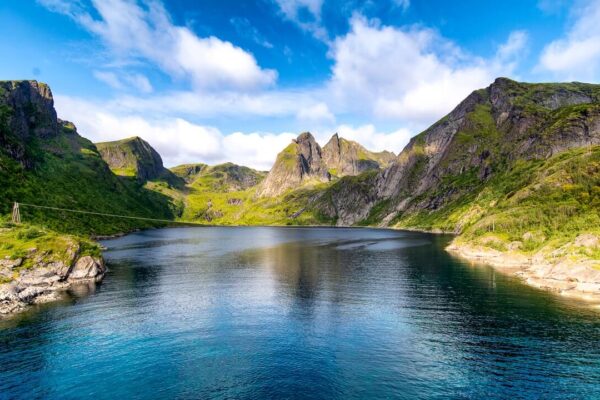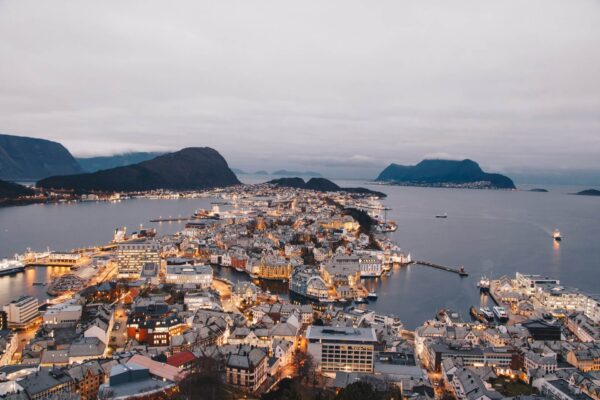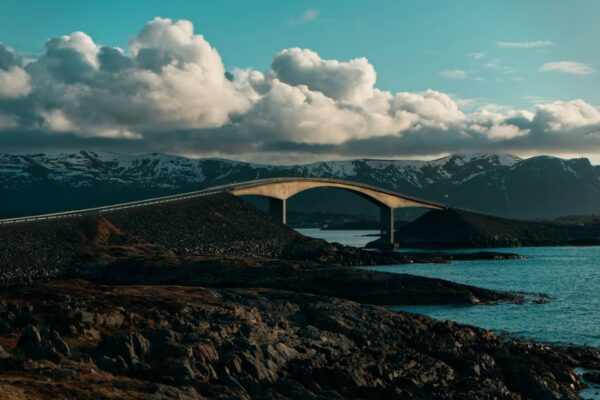Norway is a popular destination for both occasional and ambitious hobby anglers, not only due to the beautiful landscape and the variety of different waters, but also because of the abundance of different fish species.
It is precisely in the far north that these become particularly large due to the nutrient-rich waters and the sustainability guidelines.
To give you an overview of what you need to know before your fishing holiday in Norway, the available options and which permits you need, you will find a brief summary of the most important information here. If you would like to know more about the legal regulations, the Norwegian Ministry of Fisheries provides further information in Norwegian and English.
Fishing in Norway – Permit
Sea and deep-sea fishing
Which licence you need for fishing in Norway depends entirely on the body of water. For example, sea and deep-sea fishing is possible everywhere without a licence as long as you are only fishing for your own use. Selling your catch is generally prohibited.
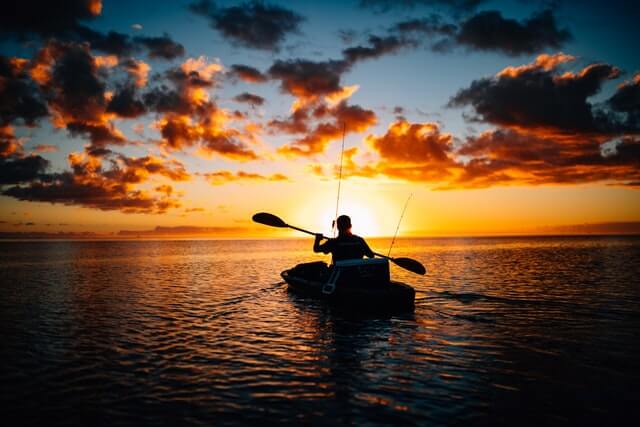
Further, you must adhere to the use of hand fishing rods (one rod per person), a distance of 100 metres from the nearest fish farm and the protection periods for the various species.
Protected all year round:
- Spiny dogfish
- Basking shark
- Porbeagle shark
- Blue ling
- Lobster
- Bluefin tuna
- Silky shark
- Eel
- Wrasse
- Cod (in the Oslofjord)
Protected at certain times:
- Greenland halibut
- Halibut
- Lumpfish
- Redfish
- Cod: Fourteen areas from Lindesnes to the coast of Skagerag, in the Oslo Fjord and the Swedish border from 1 January to 30 April
You should also adhere to the minimum sizes that certain fish must have before you are allowed to keep them. These are intended to ensure that the fish population of a species can remain at a healthy level in the long term.
Freshwater fishing
There are different rules that apply to freshwater fishing. Here you need a fishing licence, especially when it comes to waters where certain species such as salmon or sea trout are present.
However, unlike in Germany, for example, you do not need a preparatory course including a fishing licence. In Norway, you simply buy the permit (fiskekort in Norwegian) at the petrol station, post office or campsite.
The permit however is only valid for a defined area. If you are travelling to another area, you will need a new fiskekort. This is mainly due to the fact that prices depend on how productive a body of water is and which species can be caught.
If you want to fish for salmon, sea trout or Arctic char, you have to pay a fishing tax (fiskeravgift in Norwegian) as well, at least if you are of legal age. You can do this online here.
Fishing in a Norwegian Fjord
Many anglers travelling to Norway dream of fishing in one of the numerous and beautiful fjords. Here, the same regulations apply as in the sea. Fishing in the fjord is free and allowed without a licence.
However, you should bear in mind that Norwegian fjords are around 300 to 1000 metres deep and many fish live at the bottom of the fjord. Therefor, it is best to try your luck in less deep places and use suitable equipment.
Less deep spots are not only the edge of the fjord, but also the so-called fjord threshold, which forms the transition between the fjord and the open sea.
Fishing season in Norway
Overall, it can be said that the fishing season in Norway runs from May to September. However, the entire period only applies to sea fishing in southern Norway, as the freshwater season ends about a month earlier.
In central Norway, the season for sea fishing runs from May to August and for freshwater fishing from June to August. In northern Norway, you can expect the shortest season. In the sea, the high season is between July and August and in freshwater between June and August.
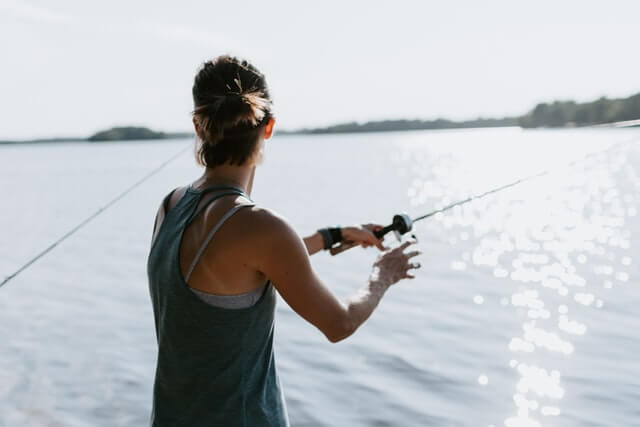
This coincides with the main tourist season, but you don’t have to worry about that so much, especially in the north. The further north you go, the fewer travellers you will encounter. The exceptions are particularly popular places such as the North Cape or the Lofoten Islands.
However, if you want to travel at a lower price, it can be worthwhile to offset your journey during the peak season. Depending on the region, you may have to accept a slight reduction in the number of certain species, but overall a fishing holiday in Norway is worthwhile outside the high season as well.
Winter and ice fishing are also popular Norwegian leisure activities. However, as an inexperienced angler, you should consult a guide, especially if you are new to fishing. Other winter highlights include watching the Northern Lights and whales.
This is how much fish you can take out of Norway
Tourists are allowed to export 10 kilograms of freshwater fish from the country. If your catch comes from a registered fishing camp, you are allowed 20 kilograms. These limits are renewed every seven days.
However, in 2021, the Norwegian Ministry of Fisheries has announced new guidelines 2021. Since then, up to 18 kilograms of fish may be exported twice a year and the catch must come from a registered fishing camp.
If you are looking for more detailed information on all regulations, we recommend the website of the Norwegian Ministry of Fisheries. The information here is available in Norwegian and English.
The right holiday home for your fishing holiday in Norway
Many holiday accommodations in Norway offer perfect conditions for anglers, as so many people travel to the Scandinavian country year after year.
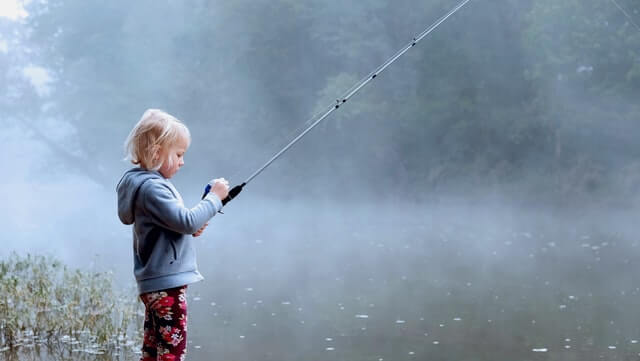
Most offer special fishing lodges, large freezers, a bank for gutting and processing and even a boat, which is included in the rent. But keep in mind that you need a boat licence for boats longer than 8 metres.
The perfect campsite for fishing in Norway
Some campsites are even specialised for anglers. The advantage of staying at a certified fishing camp is that you are then allowed to take out a larger quantity of fish. Since 2021, you are no longer allowed to take out any fish unless it comes from such a fishing camp.
Many of these fishing camps offer package holidays. Accommodation and facilities vary from facility to facility. The advantage of this option is that you can benefit from the guides’ knowledge of the area.
Fishing in Norway: tips for your holiday
- Bringing your own equipment can save you money if you are not travelling by plane.
- If you want to stay in a holiday home, it’s best to book one that is specially designed for anglers, as it provides the perfect conditions.
- If you would like to camp, we recommend a fishing camp, especially if you want to export fish from Norway.
- Wild camping is permitted in Norway. For more detailed information, click here.
- For fjord fishing, we recommend the edge or the fjord threshold due to the depth.
- A guide can help you catch more fish with their knowledge of the area.
